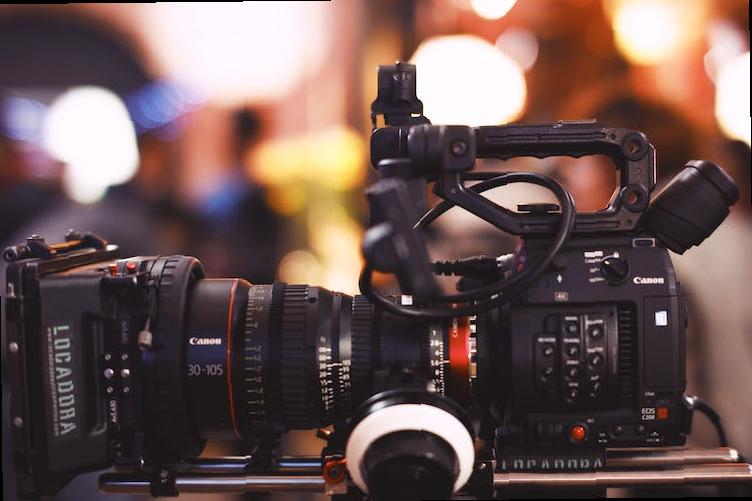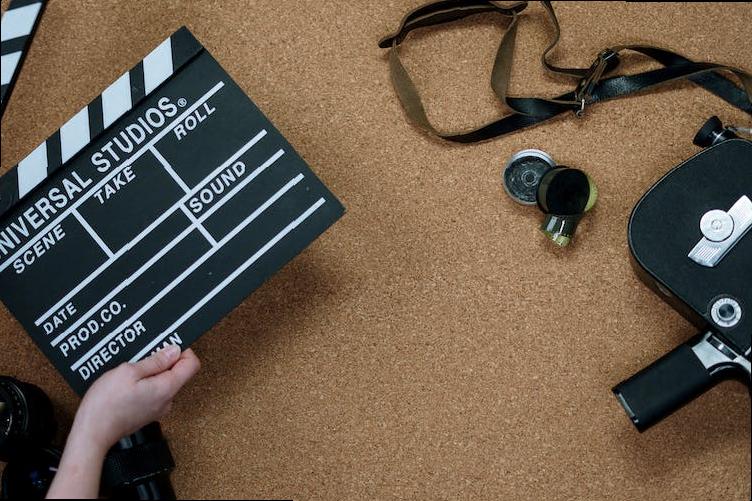MDMA, or methylenedioxymethamphetamine, has shown promise in a range of therapeutic applications. Researchers are now exploring the potential of MDMA in the realm of film, with an aim to enhance the movie-watching experience and delve into the emotions and perspectives of characters on a deeper level. This innovative approach seeks to leverage the empathogenic effects of MDMA to create a unique cinematic experience that could leave a lasting impact on viewers.
In this exploration of MDMA’s potential in film, filmmakers are experimenting with incorporating the drug into the narrative, as a catalyst for emotional breakthroughs and heightened empathy. By effectively capturing the subjective experiences that MDMA can offer, filmmakers hope to create enriching stories that resonate with audiences on a visceral level. The aim is to create a truly immersive cinematic experience that allows viewers to connect with characters in a more profound way, generating a sense of empathy and emotional connection that could potentially enhance the overall impact of the film.
Use Of Mdma In Therapy
MDMA, also known as ecstasy or Molly, has shown promise in the field of therapy. It is a synthetic psychoactive drug that produces feelings of increased energy, pleasure, empathy, and heightened sensory perception. While primarily known for its recreational use, researchers have started to explore its potential therapeutic benefits.
In a therapeutic setting, MDMA can be used to assist in treating various mental health conditions, such as post-traumatic stress disorder (PTSD) and anxiety. MDMA-assisted therapy involves the administration of the drug in conjunction with psychotherapy sessions. It is believed that the drug enhances the therapeutic process by reducing fear and defensiveness while increasing introspection and empathy.
The effects of MDMA can help individuals with PTSD by allowing them to recall and process traumatic memories in a controlled and safe environment. It can also help individuals with anxiety by promoting a sense of calm and relaxation. Additionally, MDMA has been found to increase communication and trust between patients and therapists, facilitating a more productive therapeutic relationship.

While further research is needed, preliminary studies have shown promising results. This research has led the U.S. Food and Drug Administration (FDA) to designate MDMA-assisted therapy as a breakthrough therapy for PTSD, granting it priority review for potential approval.
It is important to note that the use of MDMA in therapy should only be conducted under the guidance of trained professionals in a controlled, therapeutic environment. Self-medication or recreational use of MDMA can have serious health risks and should be avoided.
Overall, the use of MDMA in therapy holds potential for helping individuals with mental health conditions. Further research will continue to shed light on its effectiveness, safety, and optimal therapeutic applications.

Storytelling And Emotional Healing
Storytelling has long been recognized as a powerful tool for emotional healing. When we watch a movie, we become engrossed in the characters’ journeys and the narratives that unfold. This immersive experience allows us to temporarily escape from our own reality and connect with the emotions portrayed on screen. In the context of an MDMA movie, the potential for storytelling to facilitate emotional healing is further augmented.
MDMA, when used in a controlled and therapeutic setting, has been shown to enhance empathy and promote emotional openness. These qualities can be harnessed by filmmakers to create narratives that deeply resonate with viewers on an emotional level. By incorporating the use of MDMA in the storylines of movies, filmmakers have the opportunity to explore themes of personal growth, healing, and emotional breakthroughs.
Through the power of storytelling, an MDMA movie can take viewers on a transformative journey, allowing them to vicariously experience the emotional healing that the characters undergo. As the story unfolds, viewers may find themselves connecting with the characters’ struggles, triumphs, and self-discovery. This emotional resonance can have a cathartic effect, providing a sense of release and a fresh perspective on their own emotional experiences.
By delving into the potential of MDMA in film and weaving it into the fabric of storytelling, filmmakers have a unique opportunity to harness the emotional healing benefits of both mediums. The combination of empathetic storytelling and the potential therapeutic effects of MDMA can create a powerful synergy, offering audiences a cathartic and transformative experience that may contribute to their emotional well-being. In the context of an MDMA movie, storytelling becomes a vehicle for emotional healing, enabling viewers to explore and process their own emotions in a safe and immersive way.
Visual Representation Of Ecstasy
The visual representation of ecstasy, specifically in the context of exploring the potential of MDMA in film, opens up intriguing possibilities for the portrayal of intense emotional experiences. Filmmakers have the opportunity to use visual mediums to depict the sensory effects of MDMA, capturing the heightened sensations and altered perceptions that users often report.
One way to visually convey the effects of ecstasy is through vibrant and saturated colors. Filmmakers can use lighting techniques or post-production filters to create a hallucinogenic visual experience, where colors appear more vivid and intense. This can give the audience a sense of the euphoria and sensory enhancement associated with MDMA use.

Another visual element that can be explored is the portrayal of time distortion. MDMA can alter the perception of time, making it seem either slower or faster. Filmmakers can experiment with creative editing techniques, such as slow-motion or time lapses, to simulate this effect. By manipulating time visually, they can provide the audience with a glimpse into the altered sense of temporal perception that accompanies MDMA use.
Furthermore, visual representations can also focus on the interpersonal and empathetic aspects of MDMA. Filmmakers may choose to use close-ups on the characters’ faces to capture the emotional connection and increased empathy that users often experience. This can help the audience understand the profound impact MDMA may have on relationships and personal connections.

Recreating The Mdma Experience
Recreating the MDMA experience in film is a captivating and innovative approach that allows viewers to gain a better understanding of the potential benefits MDMA can offer in a therapeutic setting. The use of MDMA, commonly known as “ecstasy” or “molly,” has shown promising results in assisting individuals with post-traumatic stress disorder (PTSD) and other mental health conditions.
In the context of an MDMA movie, filmmakers can depict the effects of MDMA in a controlled and responsible manner, showcasing its ability to foster feelings of empathy, openness, and emotional connection. By recreating the MDMA experience, filmmakers can provide a unique perspective on the profound impact this substance can have on individuals.
Through visual and auditory techniques, the movie can portray the physical and psychological sensations associated with an MDMA experience. This may include heightened sensory perception, increased energy and euphoria, enhanced emotional awareness, and a sense of inner peace and well-being. By accurately capturing these aspects, filmmakers can allow the audience to vicariously experience the positive effects of MDMA within a safe, controlled environment.
By exploring the potential of MDMA in film, we can educate the wider public about the therapeutic possibilities of this substance. This portrayal opens up conversations and encourages further research and exploration into MDMA’s potential applications, particularly in the realm of mental health treatment. In essence, recreating the MDMA experience in film provides a valuable opportunity to shed light on this subject, promoting a better understanding of the benefits it may offer in a controlled and therapeutic setting.
Examining The Neurochemical Effects
Examining the neurochemical effects of MDMA is a fascinating area of research. MDMA, also known as ecstasy or Molly, is a psychoactive drug that affects the functioning of the brain. When MDMA is ingested, it acts on various neurotransmitter systems in the brain, leading to its characteristic effects.
One key neurochemical effect of MDMA is its ability to increase the release of serotonin. Serotonin is a neurotransmitter involved in regulating mood, emotions, and feelings of pleasure. By enhancing serotonin release, MDMA can induce a sense of euphoria, increased empathy, and enhanced emotional openness.
Additionally, MDMA also affects other neurotransmitters such as dopamine and norepinephrine. Dopamine is associated with reward and motivation, while norepinephrine is involved in the body’s stress response. By influencing these neurotransmitter systems, MDMA can contribute to increased pleasure, heightened motivation, and a sense of alertness.
Another important aspect of MDMA’s neurochemical effects is that it inhibits the reuptake of neurotransmitters. This means that it prolongs the activity of serotonin, dopamine, and norepinephrine in the brain, intensifying their effects. This prolonged activity contributes to the prolonged duration of MDMA’s psychoactive effects.
The neurochemical effects of MDMA are intriguing and contribute to its unique experiences. However, it is important to note that further research is needed to fully understand the complexities of MDMA’s impact on the brain. Understanding the neurochemical effects of MDMA can provide valuable insights into its potential therapeutic applications, such as in the field of psychological therapy for conditions like post-traumatic stress disorder.
Impact On Character Development
MDMA, also known as ecstasy, has been explored in the context of character development in films. The use of MDMA in movies can offer a unique perspective on the inner thoughts and emotions of characters, allowing the audience to delve deeper into their experiences and motivations.
The effects of MDMA can create a sense of empathy, emotional openness, and heightened sensory perception. These characteristics can be utilized in films to depict characters forming closer relationships, expressing their true emotions, and engaging in self-reflection. MDMA can create a sense of vulnerability, allowing characters to confront their fears and past traumas, which can contribute to their personal growth and development throughout the story.
By using MDMA as a storytelling tool, filmmakers have the opportunity to showcase the transformative power of the drug in a controlled environment. This can lead to the exploration of themes such as self-discovery, acceptance, and overcoming obstacles, as characters embark on a journey of self-exploration with the help of MDMA.
Through the portrayal of character development facilitated by MDMA, movies have the potential to provide a compelling narrative that resonates with audiences. The use of this substance in film can shed light on the multifaceted nature of human experiences, as characters navigate their emotions and relationships in a way that feels authentic and relatable. Overall, the incorporation of MDMA in movies can contribute to a richer exploration of character development and offer a unique perspective on the complexities of human nature.

Cinematic Portrayal Of Mdma-induced Introspection.
MDMA, also known as ecstasy or Molly, is a psychoactive drug that is commonly used recreationally. However, in recent years, there has been growing interest in exploring the potential of MDMA in the context of filmmaking. One specific subtopic that has been examined is the cinematic portrayal of MDMA-induced introspection.
When individuals use MDMA, they often experience heightened feelings of empathy, emotional openness, and introspection. These effects can create a unique state of mind that can be intriguing to explore in a cinematic setting. Filmmakers can depict the introspective aspects of MDMA use by capturing the inner thoughts, emotions, and self-reflection of characters on screen.
Through the use of visuals, sound, and narrative techniques, filmmakers can immerse the audience in the introspective journey of characters under the influence of MDMA. This can involve portraying vivid and vibrant imagery that reflects the heightened sensory experiences often associated with the drug. Sound design can also play a crucial role, as filmmakers can use music and other audio elements to enhance the atmosphere and evoke emotional responses.
The cinematic portrayal of MDMA-induced introspection can provide a unique perspective on human consciousness and emotional exploration. It allows filmmakers to delve deep into the subjective experience of characters, providing an opportunity to explore themes of self-discovery, vulnerability, and personal growth.
Analysis
In conclusion, the potential of MDMA in film offers an exciting avenue for exploration within the realm of entertainment and visual storytelling. The unique psychoactive effects of MDMA present opportunities to delve into the human psyche, providing a lens to examine emotions, relationships, and personal growth. By incorporating MDMA into the narrative, filmmakers can capture and convey the complex and transformative experiences associated with the drug.
In addition to its potential as a narrative tool, MDMA in film can also be used as a means to disseminate information and raise awareness about the therapeutic applications of the substance. By portraying the positive effects of MDMA in a responsible and accurate manner, filmmakers can contribute to the ongoing conversations surrounding mental health and the potential benefits of psychedelics in therapeutic settings. Through thoughtful storytelling and artistic integrity, the exploration of MDMA in film has the capacity to entertain, educate, and further the understanding of this fascinating substance.

